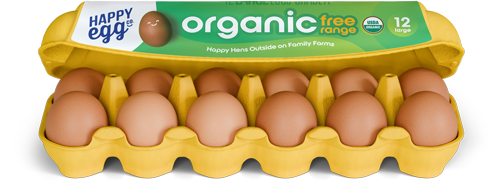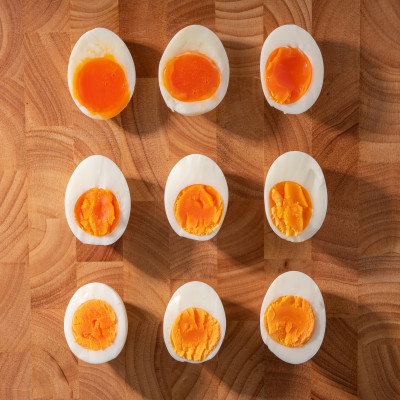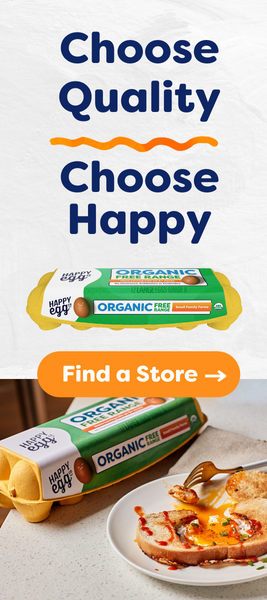You’ve done it. You’ve cracked open a tasty Happy Egg, fried the perfect egg in your trusty cast iron skillet - complete with crispy edges and tasty orange yolks. Now, let’s talk about the next step in your morning routine: cleaning that beautiful skillet, so it’s ready for your next egg adventure!
Cleaning a cast iron skillet might seem intimidating - you’ve probably heard there’s a very specific way to clean cast iron, but trust us, it’s easier than you think. Plus, the more you use and care for your skillet, the better it gets – that gorgeous seasoning will just keep improving.
To keep your skillet in top shape, and to use it for all of your favorite egg dishes for years to come, just follow these simple tips.
Step 1: Let It Cool (But Not Too Cool)
First things first, don’t go scrubbing your cast iron skillet right away! Let it cool down a little (but not all the way). Cast iron retains heat, so giving it a few minutes to cool off prevents you from burning your hands or causing the pan to crack from a sudden temperature change.
Step 2: Wipe Away Excess Food or Grease
Once your skillet has cooled a bit but is still warm, grab a paper towel or a soft cloth and wipe away any excess grease or egg residue. You’ll want to get rid of as much as possible before washing the pan. Don’t worry, it’s okay if there are a few little bits of stuck-on egg – we’ll handle those next.
Step 3: Use Water (And Not Much Else)
This is where cast iron cleaning gets its reputation for being, well, “different.” While you might be used to using soap on your regular pans, cast iron is a little more sensitive. You want to avoid soap - even super gentle soap, because it can strip the seasoning and that beautiful, non-stick coating you’ve worked hard to build. Instead, just use hot water – and a sponge or brush if needed – to clean the pan.
Pro Tip: Have stubborn egg bits? Just scrub some kosher salt. Pour a bit of salt into the skillet, then use a cloth or sponge to scrub away any remaining residue. The salt acts like a natural abrasive to lift the stuck bits without damaging the seasoning.
Step 4: Dry It Thoroughly
Once your skillet is clean, it’s important to dry it completely. Cast iron is notorious for rusting if left damp. So, after you wipe it down with a cloth, place the skillet on low heat for a minute or two to ensure there’s no moisture left behind.
Step 5: Re-season (If Needed)
If you’ve noticed any areas where the seasoning has worn off or if the skillet looks dry, it’s time for a quick re-seasoning. This is an easy process: just rub a thin layer of oil (vegetable oil, flaxseed oil, or even bacon grease) over the inside of the skillet, then heat it over medium heat for a few minutes. Wipe away any excess oil, and let it cool down.
It’s that easy! Your skillet is re-seasoned and ready for your next Happy Egg.
How to Store Your Cast Iron Skillet
Store your skillet in a dry place, and if you’re stacking pans, consider placing a paper towel or a dish cloth inside to absorb any moisture. Keep it out of the way of damp environments, and your skillet will keep getting better with every use!
FAQ
Can I soak my cast iron pan?
There’s no need to soak your cast iron skillet. Cast iron is really porous, and soaking it can lead to rusting. A quick rinse with hot water is usually enough to clean just about any cast iron pan.
Can I put my cast iron in the dishwasher?
Nope, your cast iron skillet should never go in the dishwasher. The harsh detergents and high heat can strip away the seasoning and damage the surface. Stick to hand washing with hot water. This tried and true method will give you the best results the next time you’re frying eggs - or making any meal that calls for a cast iron skillet!


















